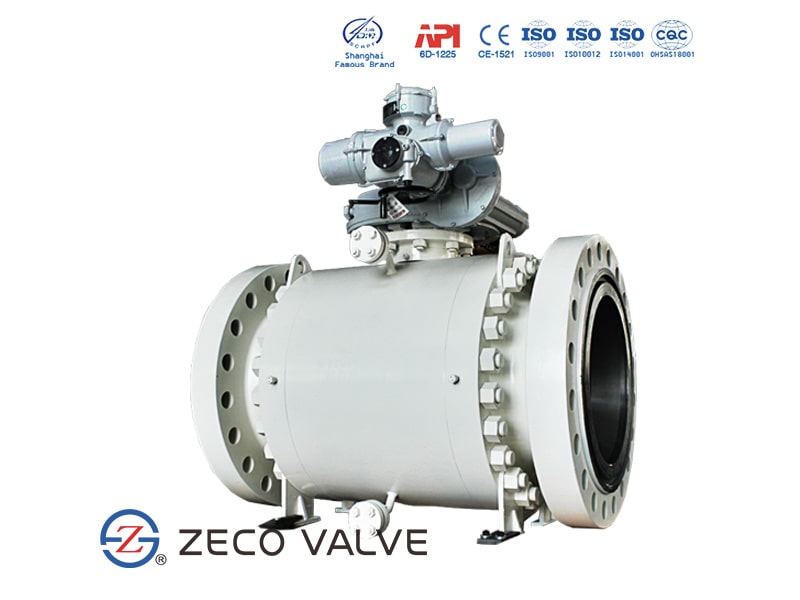HOTLINE: +840902720814

Electric ball valves use an electric actuator to rotate a ball with a hole in the center to control flow.
ZECO electric ball valve is named after the combination of an electric actuator and ball valve. It is usually used in medium pipelines requiring remote switch and adjustment control. It is an important control product in industrial automation control. ZECO’s electric actuators are usually equipped with German AUMA electric actuators. If customers have other requirements, ZECO company can also customize them according to customers’ requirements. 2 inch electric ball valve is one of the common types of the electrically operated ball valve.
Generally, electric ball valves convert the electrical energy into rotary force using the electric motor thus turning ball valves. It is the most efficient mode of controlling valves due to the clean electric energy and quiet mode of turning valves.
To understand it better, here is how the electric ball valve works.
First, you will switch on the electric ball valves to allow the proper flow of electric current through the system. Electric current will power the electric motor which will generate a torque transmitted by a shaft connected to the valve stem.
You will realize that the ball valve begins to rotate due to action from the shaft and the electric motor. The amount of power that you need to control the operations of the electric ball valve will vary accordingly.
You may need 12V, 24V, and 48V of direct current to help in controlling the electric ball valve. On the other hand, you may also use 24V, 48V, 120V, 130V, and 240V of alternating current to control the valve.
As the power flow through the motor, you can control the force that the motor will produce to rotate the ball valve. It has a system of different gears which help in controlling the shaft thus producing different levels of force.
You can decide on the gear that will produce the best of forces that can control the electric ball valve accordingly. The speed at which the electric ball valve will operate is inversely proportional to the torque f the electric ball valve.
When you’re mounting electric valve actuators in place, use sturdy, industry-standard parts. Many actuators and mounting hardware use the ISO 5211 standards for connections, which ensures various brands and components work together seamlessly.
You’ll need at least three components for mounting:
| No | Part | Material |
| 1 | Body | ASTM A105 |
| 2 | Bonnet | ASTM A105 |
| 3 | Ball | ASTM A105 |
| 4 | Seat | ASTM A105 + PTFE |
| 5 | Stem | ASTM A182 F6a |
| 6 | Anti-static Device | SS304 |
| 7 | Gasket | Graphite + SS304 |
| 8 | Bolt | ASTM A193 B7 |
| 9 | Nut | ASTM A194 2H |
| 10 | O-ring | Viton A |
| 11 | Electric Actuator | ASTM A182 F304 |
You may have a very poor design of the electric ball valve that may fail to work with the application requirements. The poor design may be in terms of poor chemical compatibility, and poor rating on flow or pressure rate.
You may also experience failure in successful operations, which may come as a result of poor or faulty installations. There may be leakages or wrong position of the electric ball valves thus leading to their eventual failure.
In addition to the above contributors, you may also have improper operations for the electric ball valves. In other words, you may use the electric ball valves for the wrong operations thus leading to complete failure.

Nhập email của bạn để nhận thông báo sớm nhất của chúng tôi
